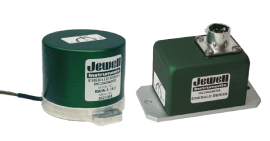Your project needs the precision to monitor movement as fine as 1 µG or µradian, but there will also be a lot of surrounding noise and vibration that you don’t want to interfere with your readings. If you’re working on something like this, a force-balanced sensor is the answer, and here is why.
1. Precise Performance that Holds Up to Harsh Environments
Forced balance sensors have a strong dynamic response (as much as 200 Hz for some models) and diverse measuring ranges, up to ±90° for inclinometers and ±20G for accelerometers. They come in rugged enclosures with mechanisms that are designed to filter shock and vibration from readings. They can also be fluid-damped to alter the vibration and noise resistance and have a low thermal drift.
2. Some Models Can Help When on a Budget
MEMS sensors have been competing against force-balanced technology, mostly due to their lower cost. However, some models can match or even beat the price of some MEMS without sacrificing precision. The Emerald series inclinometers and accelerometers are the low-cost versions of force-balanced sensors. They are not fluid-damped but beat MEMS with higher precision while hitting similar price points.
What They’re Used For
With rugged enclosures, high temperature, and vibration resistance, these sensors can be placed in plenty of environments. They are typically used for OEM projects such as military, rail transportation, construction, agricultural and industrial equipment. With their fine precision, they can also be used for testing and research within the aerospace, automotive, and academic worlds.
Are you curious to know if a forced balance sensor is the answer for your project? Talk to a product expert.

